Feb
26
2019

The most effective method for weight loss! Lose weight in less than 15 minutes per day.
These sound like typical weight-loss overhyped sales pitches, but they are reasonably supported by evidence. There is now good (but not great) evidence that frequent and consistent self-monitoring predict successful long-term weight management. In fact, a new study finds that those who successfully used online dietary intake self-monitoring eventually spent only 14.6 minutes per day on the activity.
There are three components to self-monitoring in weight management: dietary intake monitoring, self-weighing, and exercise self-monitoring. Self-weighing probably has the best evidence so far. The evidence supports weighing yourself from every day to every week consistently as a good predictor of successful long term weight management. The optimal frequency is still a matter of debate, but it should be at least weekly. Consistency also appears to be a key.
Dietary self-monitoring is essentially estimating or counting the calories you eat each day and recording them in some fashion. Why might this be helpful? The evidence shows that people generally underestimate the calories in food and that they consume (by as much as 50% in some studies). These studies are limited often by self-reporting, but there is a consistent result.
In fact, people both over and underestimate the caloric content of different foods, but they tend to underestimate (when they do) by more than they overestimate. In one study they overestimated by 65 calories on average, while underestimating other foods by 165 calories.
Continue Reading »
Feb
22
2019
 There is little doubt that an asteroid impact, the one that formed the Chicxulub crater in the Caribbean Sea, was the primary cause of the K-Pg extinction event, the one that saw the end of non-avian dinosaurs. But there is continued debate about the role of massive volcanic eruptions at about the same time in the Deccan Traps, in what is modern day India (on the almost exact opposite side of the planet).
There is little doubt that an asteroid impact, the one that formed the Chicxulub crater in the Caribbean Sea, was the primary cause of the K-Pg extinction event, the one that saw the end of non-avian dinosaurs. But there is continued debate about the role of massive volcanic eruptions at about the same time in the Deccan Traps, in what is modern day India (on the almost exact opposite side of the planet).
Some of this debate can be settled by more precise dating of the three relevant events (mass extinction, asteroid impact, Deccan Traps). A new study adds more precise dating of the volcanic eruptions, shedding some light on the whole question.
The varying hypotheses about how these two events relate to the mass extinction include the notion that the asteroid impact was the main event, and the volcanic eruptions a minor player. In this view the asteroid impact caused the mass extinction, and there would have been no mass extinction without it. At the other end of the spectrum is the belief that gases released from the volcanoes at the Deccan Traps caused global climate change, poisoned the atmosphere, and was the primary driver of the mass extinction. By the time the asteroid hit the show was over, or at most the impact served as a coup de grace for an extinction even already well underway.
The reality likely falls somewhere between these two extremes. One idea is that the impact and the eruptions were a one-two punch for life on Earth. The gases caused global warming, causing species to adapt to a warmer climate and also causing significant stress, getting the mass extinction under way. But then the asteroid hit, causing global cooling. The warm-adapted animals could not rapidly adapt to the cold, and the minor extinction event became a mass extinction.
Continue Reading »
Feb
21
2019
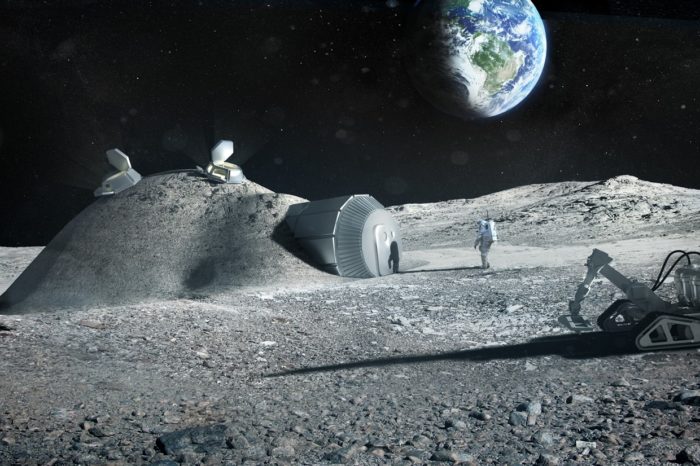 If all goes well, the 2020s may be the decade that we return to the Moon. There is certainly renewed interest in the Moon, and we may, in fact, be entering a new space race with China.
If all goes well, the 2020s may be the decade that we return to the Moon. There is certainly renewed interest in the Moon, and we may, in fact, be entering a new space race with China.
In December 2018 NASA announced their updated Gateway mission plans – they seek to put a platform in permanent orbit around the moon, and then use the platform to shuttle astronauts to and from the Moon’s surface. They also hope to do all this within 10 years.
They will do this with the new Space Launch System (SLS) and the Orion capsule. This is a powerful rocket capable of deep space missions (beyond low-earth orbit). They also plan to partner with private industry for many of the components. NASA administrator, Jim Bridenstine, recently said:
“It’s important that we get back to the moon as fast as possible,” said Bridenstine in a meeting at NASA’s Washington headquarters, adding he hoped to have astronauts back there by 2028.
“This time, when we go to the Moon, we’re actually going to stay. We’re not going to leave flags and footprints and then come home to not go back for another 50 years” he said.
“We’re doing it entirely different than every other country in the world. What we’re doing is, we’re making it sustainable so you can go back and forth regularly with humans.”
I think this is exactly the right course. Mars can wait until after we flesh out an Earth-Moon infrastructure. Having a permanent presence on the Moon will be much easier than Mars, mainly because it’s a lot closer, so we should do that first.
Continue Reading »
Feb
19
2019
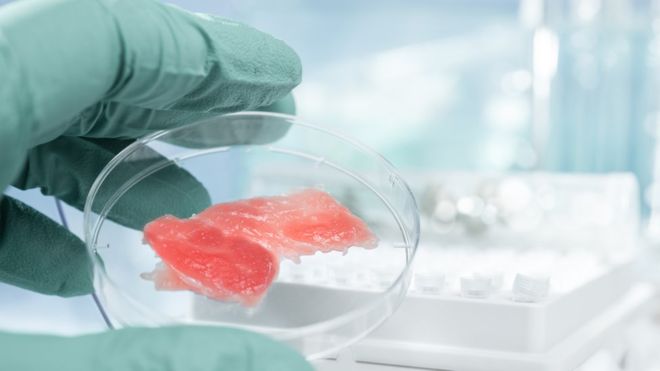 Climate change has altered the debate over the ethics of meat consumption, adding a new dimension that certainly changes the equation. There are also new options on the horizon, however, such as lab grown or cultured meat. How this will all shake out is still unknown, but it seems likely our meat consumption habits are going to be different in 50 years.
Climate change has altered the debate over the ethics of meat consumption, adding a new dimension that certainly changes the equation. There are also new options on the horizon, however, such as lab grown or cultured meat. How this will all shake out is still unknown, but it seems likely our meat consumption habits are going to be different in 50 years.
There are several issues to consider regarding meat consumption. One is simply the ethics of animal consumption. This one is a bit personal, and I don’t think there is any one answer. I personally advocate for humane animal treatment, but I do not think it is unethical to breed animals for consumption or to use their body parts for whatever purpose we like after they are dead. As long as their life is reasonably comfortable and their death painless and stress free, I don’t see an ethical issue.
This is essentially the position of Temple Grandin, who is a staunch advocate for animals rights but is not against meat consumption, she simply advocates for a system of animal handling from beginning to end which is humane.
A second issue is land use and the overall impact on the environment. Here the issues are perhaps ethically a bit clearer, but technically still complex. There is no question that growing meat requires more energy and more land and resources overall than plant consumption. However, there are many variables involved and depending on the details plants are not always more efficient.
Continue Reading »
Feb
18
2019
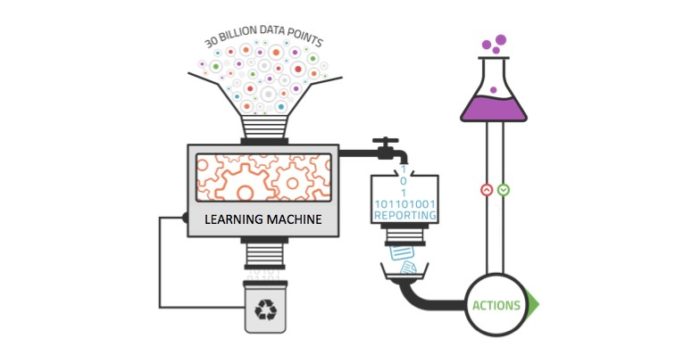 At the AAAS this past weekend Dr Genevera Allen from Rice University in Houston presented her findings regarding the impact of using machine learning algorithms on evaluating scientific data. She argues that it is contributing to the reproducibility problem.
At the AAAS this past weekend Dr Genevera Allen from Rice University in Houston presented her findings regarding the impact of using machine learning algorithms on evaluating scientific data. She argues that it is contributing to the reproducibility problem.
The core problem, which I have discussed many times before, is that if scientists do not use sufficiently rigorous methods, they will find erroneous patterns in their data that are not really real. Sometimes this amounts to p-hacking, which results from methods that may seem innocent but tweak the statistical results in order to manufacture significance. This could be something as innocuous as analyzing the data as you go and then stopping the study when you reach statistical significance. Or, similarly, if you initially plan on testing 100 subjects, and the results are not quite significant, you may decide to enroll another 20 subjects in the hopes that you will “cross the finish line.”
Here is another issue that is similar to what Allen is warning about. Let’s say a doctor notices an apparent pattern – my patients with disease X all seem to have red hair. So they review their patient records, and find that indeed there is an increased probability of having red hair if you have disease X. That all seems perfectly cromulent – but it isn’t. Or we could say that such a correlation is preliminary, and needs to be verified.
The reason for this is that the physician may have just noticed a random correlation in their patient population, a statistical fluke. Every data set, such as a patient population, will have many such spurious correlations by chance alone. If you notice such a random correlation, that doesn’t make it a real phenomenon, even if you then count the numbers and do the math. You haven’t tested the hypothesis that the correlation is real, you just confirmed an observation of a chance clumpiness in the data.
Continue Reading »
Feb
14
2019
 It has been 25 years since the 1994 Dietary Supplement Health and Education Act (DSHEA), which reduced the FDA’s power to regulate supplements. Since DSHEA supplements have been regulated like food, not drugs, with no preapproval process. The FDA can only take action after a product is on the market, and they have the burden of proof of either harm or adulteration (for example, by containing actual drugs).
It has been 25 years since the 1994 Dietary Supplement Health and Education Act (DSHEA), which reduced the FDA’s power to regulate supplements. Since DSHEA supplements have been regulated like food, not drugs, with no preapproval process. The FDA can only take action after a product is on the market, and they have the burden of proof of either harm or adulteration (for example, by containing actual drugs).
Unsurprisingly:
Since the law was enacted, the industry has grown from 4,000 products and $4 billion a year in sales to as many as 80,000 products and $50 billion in sales, according to the FDA.
There is no evidence that those additional 76,000 products and $46 billion per year have provided any health benefits to the public, and in fact are probably a net health negative. Anything genuinely useful, like prenatal vitamins, or supplements for actual deficiencies, were already available. The new products are mostly snake oil.
The situation is almost comically ridiculous. Herbal supplements are rampant with substitutions, contaminations, and adulterations. But even if the label is accurate, most herbs do not do what is claimed for them. They are simply not medical useful.
Continue Reading »
Feb
12
2019
 We are on the cusp of several technologies that promise to transform medicine – genetic manipulation, brain-machine interface, and stem cell therapies among them. One of the hopes for stem cells is that we will be able to grow from them entire replacement organs. Imagine that you have kidney failure, and face years of dialysis with the hope of finding a kidney donor, so you can exchange that dialysis for a regimen of anti-rejection drugs. You may wait years on the list because we simply don’t have enough organs to go around.
We are on the cusp of several technologies that promise to transform medicine – genetic manipulation, brain-machine interface, and stem cell therapies among them. One of the hopes for stem cells is that we will be able to grow from them entire replacement organs. Imagine that you have kidney failure, and face years of dialysis with the hope of finding a kidney donor, so you can exchange that dialysis for a regimen of anti-rejection drugs. You may wait years on the list because we simply don’t have enough organs to go around.
Now imagine that even before your kidneys completely fail doctor take a skin or mucous membrane sample from you, and then over the next few month they grow a new kidney from your own cells. The kidney is your own tissue, and so there is no rejection at all. Eventually the new kidney is surgically implanted and you are good to go.
It doesn’t take much imagination to see how awesome this could be. If we could grow new hearts, lungs, livers, pancreases or kidneys from one’s own tissue that would transform medicine. The threshold for doing transplants could go way down, because we no longer need donors, we can grow them. The risk would go down because there is no longer the possibility of rejection and therefore the need for powerful anti-rejection drugs, so we could do transplants in more situations. We wouldn’t have to wait for organs to completely fail. Also, if you have cancer we don’t have to try to preserve as much of the organ as possible – just take the whole thing out, making sure you get all the cancer, and replace it with a new one.
This would be a truly transformative medical advance that would bring us into a new age of medicine. I don’t think we are close (meaning <10 years) to such applications, but we are close enough to say that researchers are working on it, and to see a path to get there. It’s enticing.
Continue Reading »
Feb
11
2019
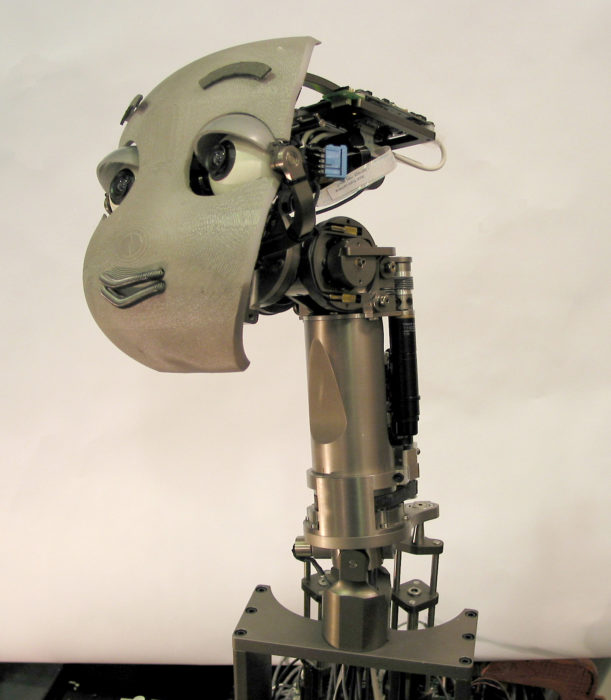 Would you sacrifice a human to save a robot? Psychologists have set out to answer that question using the classic trolley problem.
Would you sacrifice a human to save a robot? Psychologists have set out to answer that question using the classic trolley problem.
Most people by now have probably heard about the trolley dilemma, as it has seeped into popular culture. This is a paradigm of psychology research in which subjects are presented with a dilemma – a trolley is racing down the tracks and the breaks have failed. It is heading toward 5 people who are unaware they are about to be killed. You happen to be right next to the lever that can switch the trolley to a different track, where there is only one person at risk. Would you switch the tracks to save the 5 people, but condemning the 1 person to death? Most people say yes. What if in the same situation you were on the trolley at the front of the car, and in front of you was a particularly large person – large enough that if you pushed them off the front of the trolley their bulk would stop the car and save the 5 people, but surely kill the person you pushed over (I know, this is contrived, but just go with it). Would you do it? Far fewer people indicate that they would.
The basic setup is meant to test the difference between being a passive vs active cause of harm to others in the context of human moral reasoning. We tend not to be strictly utilitarian in our moral reasoning, thinking only of outcomes (1 death vs 5), but are emotionally concerned with whether we are the direct active cause of harm to others vs allowing harm to come through inaction or as a side consequence of our actions. The more directly involved we are, the more it bothers us, not just the ultimate outcome.
The trolley problem has become so famous because you can use it as a basic framework and then change all sorts of variables to see how it affects typical human moral reasoning. You can play with the numbers, to see if there is a threshold (how many lives must be saved in order to make a sacrifice worth it?), or you can vary the age of those saved vs those sacrificed, or perhaps the person you might sacrifice is a coworker. Does that make their life more valuable? What if they are kind of a jerk?
Continue Reading »
Feb
08
2019
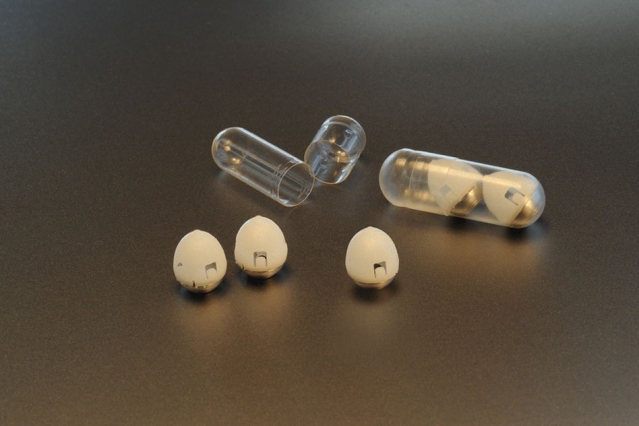 Insulin is a protein. Like all protein (or peptide) drugs it needs to be injected, you can’t take it in pill form. This is because proteins are digested in the GI tract, are generally large and difficult to absorb intact, and if they make it that far they then have to deal with the liver before they can get to their intended target. So protein or peptide drugs are simply not able to be delivered orally.
Insulin is a protein. Like all protein (or peptide) drugs it needs to be injected, you can’t take it in pill form. This is because proteins are digested in the GI tract, are generally large and difficult to absorb intact, and if they make it that far they then have to deal with the liver before they can get to their intended target. So protein or peptide drugs are simply not able to be delivered orally.
The need to give daily injections is literally a pain, however. There has therefore been extensive research in the pharmaceutical industry into methods to allow for oral, transdermal, or mucous membrane administration of so-called biologicals. As this review states:
These problems can be overcome by adopting techniques such as chemical transformation of protein structures, enzyme inhibitors, mucoadhesive polymers and permeation enhancers.
A new study which is getting some media attention takes a completely different approach – they have created an autoinjector that you swallow, which then injects insulin into the stomach from the inside. The research is the result of collaboration between academics and industry:
Giovanni Traverso, an assistant professor at Brigham and Women’s Hospital, Harvard Medical School, and a visiting scientist in MIT’s Department of Mechanical Engineering, where he is starting as a faculty member in 2019, is also a senior author of the study. The first author of the paper, which appears in the Feb. 7 issue of Science, is MIT graduate student Alex Abramson. The research team also includes scientists from the pharmaceutical company Novo Nordisk.
Continue Reading »
Feb
07
2019
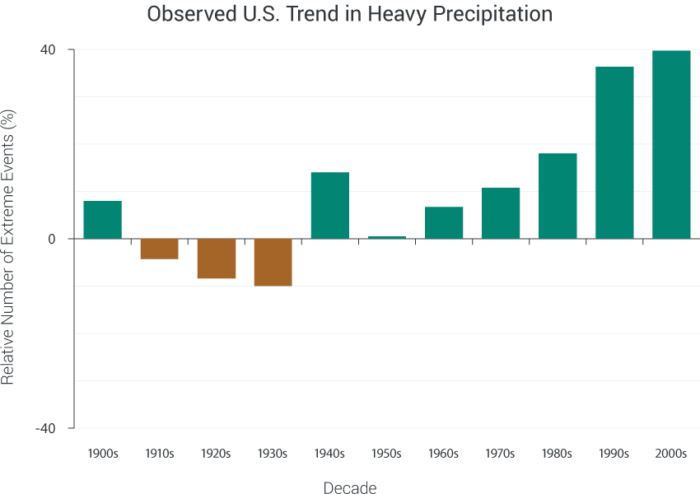 The last four years were the four warmest years on record (in the order 2016,2017,2015 and 2018). Since 1880 the average surface temperature on Earth has risen by about 1 degree C, 0.79 degrees above the 20th century average. At the same time global ice is decreasing, especially in the arctic which is losing 12.8% per decade. Sea level is also rising – in 2014 the average sea level was 2.6 inches above the 1993 average.
The last four years were the four warmest years on record (in the order 2016,2017,2015 and 2018). Since 1880 the average surface temperature on Earth has risen by about 1 degree C, 0.79 degrees above the 20th century average. At the same time global ice is decreasing, especially in the arctic which is losing 12.8% per decade. Sea level is also rising – in 2014 the average sea level was 2.6 inches above the 1993 average.
These numbers are all clear, but are abstract for most people. If scientists didn’t tell us the planet was warming on average, we wouldn’t see it in our daily lives. This made it easier to engage in politically motivated denial. The science is also complex, which leaves a lot of room for rationalization. You can focus on different types of measurement (surface temperatures vs atmospheric, for example) or on the need to adjust the raw data to account for historical changes in measurements. You could play games with the statistics to manufacture an illusory “pause” or focus on the uncertainty.
To be clear, carefully examining the details is critically important. The problem is when you do so with an agenda other than objectively describing reality. There is enough wiggle room to convince yourself of whatever it is you want to believe.
The needle appears to be moving, however, not because the science has become more solid, but because the effects have become more obvious. Extreme weather events are also significantly increasing, by about 40% since 1950. Just in the past year we had record breaking fires on the West coast, record breaking tornadoes in my home state of CT, and now record breaking polar vortex driven cold in the midwest. We are seeing more powerful hurricanes, like Hurricanes Florence and Michael. There are record breaking heat waves around the world, with Death Valley having the warmest month ever recorded on Earth last July.
Continue Reading »


 There is little doubt that an asteroid impact, the one that formed the Chicxulub crater in the Caribbean Sea, was the primary cause of the K-Pg extinction event, the one that saw the end of non-avian dinosaurs. But there is continued debate about the role of massive volcanic eruptions at about the same time in the Deccan Traps, in what is modern day India (on the almost exact opposite side of the planet).
There is little doubt that an asteroid impact, the one that formed the Chicxulub crater in the Caribbean Sea, was the primary cause of the K-Pg extinction event, the one that saw the end of non-avian dinosaurs. But there is continued debate about the role of massive volcanic eruptions at about the same time in the Deccan Traps, in what is modern day India (on the almost exact opposite side of the planet). If all goes well, the 2020s may be the decade that we return to the Moon. There is certainly renewed interest in the Moon, and we may, in fact, be entering a new space race with China.
If all goes well, the 2020s may be the decade that we return to the Moon. There is certainly renewed interest in the Moon, and we may, in fact, be entering a new space race with China. Climate change has altered the debate over the ethics of meat consumption, adding a new dimension that certainly changes the equation. There are also new options on the horizon, however, such as lab grown or cultured meat. How this will all shake out is still unknown, but it seems likely our meat consumption habits are going to be different in 50 years.
Climate change has altered the debate over the ethics of meat consumption, adding a new dimension that certainly changes the equation. There are also new options on the horizon, however, such as lab grown or cultured meat. How this will all shake out is still unknown, but it seems likely our meat consumption habits are going to be different in 50 years. At the AAAS this past weekend Dr Genevera Allen from Rice University in Houston presented her findings regarding the impact of using machine learning algorithms on evaluating scientific data. She argues that it is contributing to the reproducibility problem.
At the AAAS this past weekend Dr Genevera Allen from Rice University in Houston presented her findings regarding the impact of using machine learning algorithms on evaluating scientific data. She argues that it is contributing to the reproducibility problem. It has been 25 years since the 1994 Dietary Supplement Health and Education Act (DSHEA), which reduced the FDA’s power to regulate supplements. Since DSHEA supplements have been regulated like food, not drugs, with no preapproval process. The FDA can only take action after a product is on the market, and they have the burden of proof of either harm or adulteration (for example, by containing actual drugs).
It has been 25 years since the 1994 Dietary Supplement Health and Education Act (DSHEA), which reduced the FDA’s power to regulate supplements. Since DSHEA supplements have been regulated like food, not drugs, with no preapproval process. The FDA can only take action after a product is on the market, and they have the burden of proof of either harm or adulteration (for example, by containing actual drugs). We are on the cusp of several technologies that promise to transform medicine – genetic manipulation, brain-machine interface, and stem cell therapies among them. One of the hopes for stem cells is that we will be able to grow from them entire replacement organs. Imagine that you have kidney failure, and face years of dialysis with the hope of finding a kidney donor, so you can exchange that dialysis for a regimen of anti-rejection drugs. You may wait years on the list because we simply don’t have enough organs to go around.
We are on the cusp of several technologies that promise to transform medicine – genetic manipulation, brain-machine interface, and stem cell therapies among them. One of the hopes for stem cells is that we will be able to grow from them entire replacement organs. Imagine that you have kidney failure, and face years of dialysis with the hope of finding a kidney donor, so you can exchange that dialysis for a regimen of anti-rejection drugs. You may wait years on the list because we simply don’t have enough organs to go around. Would you sacrifice a human to save a robot?
Would you sacrifice a human to save a robot?  Insulin is a protein. Like all protein (or peptide) drugs it needs to be injected, you can’t take it in pill form. This is because proteins are digested in the GI tract, are generally large and difficult to absorb intact, and if they make it that far they then have to deal with the liver before they can get to their intended target. So protein or peptide drugs are simply not able to be delivered orally.
Insulin is a protein. Like all protein (or peptide) drugs it needs to be injected, you can’t take it in pill form. This is because proteins are digested in the GI tract, are generally large and difficult to absorb intact, and if they make it that far they then have to deal with the liver before they can get to their intended target. So protein or peptide drugs are simply not able to be delivered orally. The last four years were the
The last four years were the 




